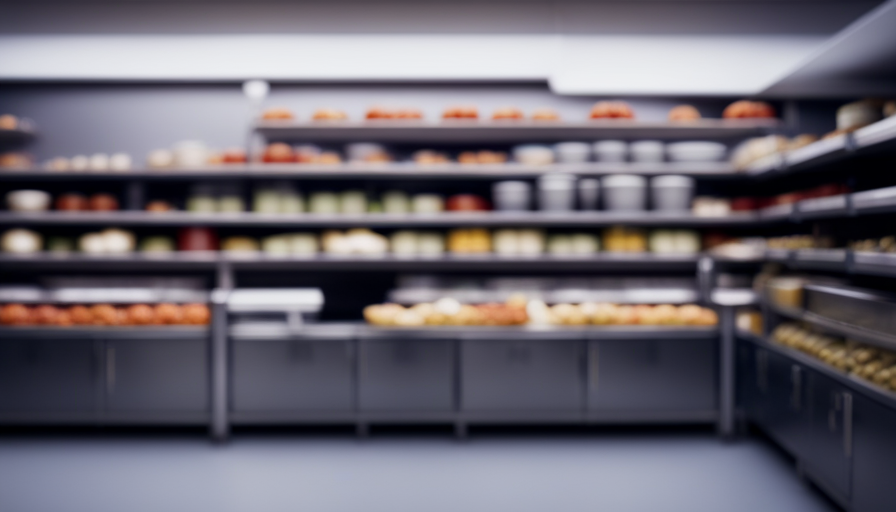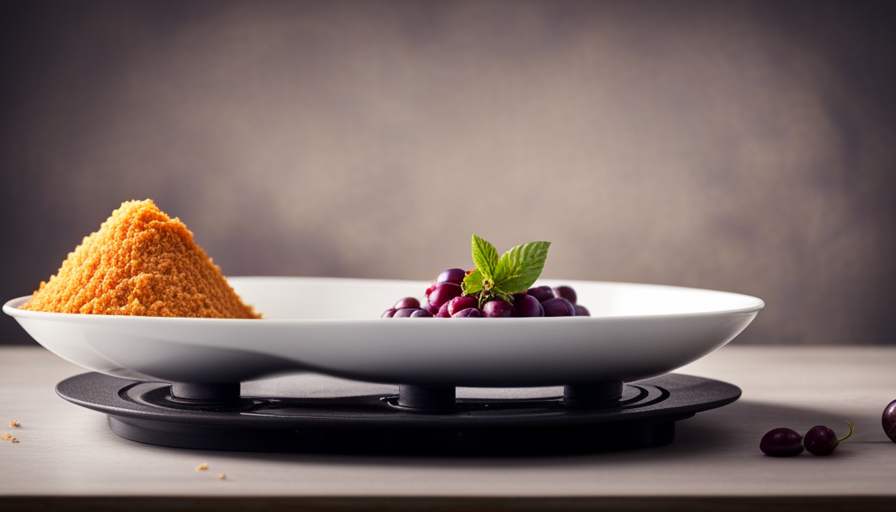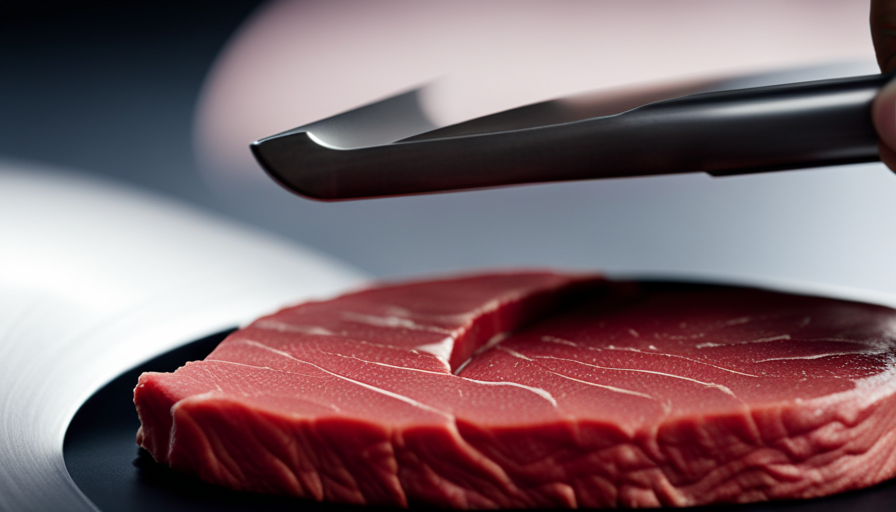Are you an expert cook aiming to hone your culinary expertise in a professional kitchen setting? A vital element in managing a thriving kitchen is the correct storage of both raw and prepared meals. This article will introduce you to the techniques of proper food storage, uncovering the keys to preserving flavor, freshness, and safety.
Food safety regulations are of utmost importance in any kitchen, and understanding them is the first step towards ensuring the well-being of your customers. Organizing your food storage areas is essential for efficient operations, allowing you to easily access ingredients and prevent cross-contamination.
You will also learn the best practices for storing meat, seafood, fruits, vegetables, and dry food, as each requires specific conditions to stay at their prime.
With the right containers and packaging, you can extend the shelf life of your ingredients and reduce waste. Implementing the First-In-First-Out (FIFO) method will guarantee that your oldest stock is used first, avoiding spoilage.
Lastly, we will discuss the importance of regularly checking and maintaining storage conditions to uphold the highest standards of food safety.
Get ready to elevate your cooking game by mastering the art of food storage in a commercial kitchen!
Key Takeaways
- Proper storage of cooked and raw food is crucial for freshness, taste, and safety.
- Understanding food safety regulations protects customers and maintains a safe environment.
- Using the right containers and packaging extends shelf life and reduces waste.
- Regularly checking and maintaining storage conditions upholds food safety standards.
Understanding Food Safety Regulations
You need to understand food safety regulations to ensure that your commercial kitchen is up to code and that your customers are protected from any potential health risks.
One of the most important aspects of food safety regulations is proper food safety training. It’s crucial for all staff members in a commercial kitchen to receive thorough training on how to handle, store, and prepare food safely. This training should cover topics such as proper handwashing techniques, cross-contamination prevention, and the importance of temperature control.
Temperature control is a critical component of food safety. It’s essential to store both cooked and raw food at the correct temperatures to prevent the growth of bacteria that can cause foodborne illnesses. Cooked food should be stored at temperatures above 140°F to keep it out of the danger zone, which is between 40°F and 140°F. Raw food, on the other hand, should be stored at temperatures below 40°F to slow down the growth of bacteria.
To ensure proper temperature control, it’s important to regularly monitor and record temperatures in your commercial kitchen. This can be done using temperature logs or digital thermometers. Additionally, make sure to properly label and date all food items to ensure that older items are used first.
Understanding and following food safety regulations is crucial for the success and reputation of your commercial kitchen. By prioritizing food safety training and maintaining proper temperature control, you can protect your customers and create a safe and healthy environment for everyone.
Organizing Food Storage Areas
Maximize efficiency and prevent chaos by carefully arranging your storage spaces for easy access and quick retrieval of ingredients and dishes. Here are three essential tips to help you organize your food storage areas effectively:
-
Maximize space utilization: To make the most of the available storage space, invest in shelving units and racks that can be adjusted to different heights. Use stackable containers and bins that can be easily stacked on top of each other. This will help you utilize vertical space efficiently and create more room for storage. Additionally, consider installing hooks or hanging systems on the walls to hang pots, pans, and utensils, freeing up valuable shelf space.
-
Labeling: Implement a labeling system for all your stored items. Use clear, waterproof labels to identify containers and shelves, indicating the contents, date of storage, and expiration dates. This will ensure that you can quickly locate specific ingredients or dishes when needed and prevent any confusion or mistakes that may arise from using expired items.
-
Inventory management: Regularly conduct inventory checks to keep track of your stock levels. Create a system where you rotate stock on a first-in, first-out basis to minimize waste. Keep a record of items that are frequently used to ensure they’re always well-stocked. Additionally, consider implementing technology solutions, such as inventory management software, to streamline the process and improve accuracy.
By implementing these strategies, you can maximize your storage space utilization, maintain an organized system, and ensure efficient retrieval of ingredients and dishes.
Properly Storing Meat and Seafood
To maintain the freshness and safety of your meat and seafood, it’s crucial to store them properly. This includes properly freezing fish and storing poultry safely. Here are some guidelines to follow:
When freezing fish, it’s important to do it correctly to preserve its quality. Start by cleaning and gutting the fish, then wrap it tightly in plastic wrap or aluminum foil to prevent freezer burn. Place the wrapped fish in a freezer bag, removing as much air as possible before sealing. Label the bag with the date and type of fish. When thawing fish, do it in the refrigerator or under cold running water to avoid bacterial growth.
When it comes to storing poultry, there are a few key points to remember. Store raw poultry in its original packaging or in a clean, sealed container on the bottom shelf of the refrigerator to prevent cross-contamination. Keep it separate from other foods, especially ready-to-eat items. Cooked poultry should be stored in a covered container in the refrigerator and consumed within 3-4 days.
Properly storing meat and seafood is crucial in a commercial kitchen to maintain freshness and ensure food safety. By following these guidelines, you can help protect your customers and maintain the quality of your ingredients.
Storing Fruits and Vegetables
When storing fruits and vegetables, it’s important to consider their individual needs in terms of temperature, humidity, and ethylene production. Proper storage of fresh produce is crucial to maintain their quality and prevent spoilage.
Here are some best practices for vegetable storage in a commercial kitchen.
Firstly, it’s essential to separate fruits and vegetables. Fruits release ethylene gas that can speed up the ripening process of vegetables, causing them to spoil faster. Store fruits and vegetables in separate areas or use different storage units to prevent cross-contamination.
Secondly, maintain the right temperature and humidity levels. Most vegetables thrive in a cool and humid environment, with temperatures between 32°F and 41°F (0°C and 5°C) and humidity levels around 85-95%. However, some vegetables like potatoes prefer a slightly warmer temperature, around 50°F (10°C). Use refrigerators or walk-in coolers with adjustable settings to create the ideal conditions for each type of vegetable.
Lastly, proper packaging is crucial. Use breathable containers or perforated plastic bags to allow air circulation and prevent moisture buildup. Avoid storing vegetables in sealed plastic bags, as it can lead to spoilage.
By following these best practices for vegetable storage, you can ensure that your fresh produce stays fresh and retains its quality for longer periods, minimizing waste and maximizing the use of your ingredients.
Managing Dry Food Storage
Make sure you properly manage your dry food storage to prevent approximately 15% of the dry food products from becoming infested with pests. To help you with this, here are four effective storage solutions for bulk food:
-
Invest in airtight containers: Use high-quality airtight containers to keep your dry food fresh and protect it from pests. These containers prevent air, moisture, and pests from entering, ensuring the longevity of your products.
-
Implement a first-in, first-out (FIFO) system: Arrange your dry food in a way that allows you to use the oldest products first. This ensures that nothing sits in storage for too long, reducing the risk of spoilage and waste.
-
Label and organize: Clearly label each container with the product name and expiration date. Additionally, organize your dry food based on categories such as grains, spices, and snacks. This makes it easier to locate items and maintain inventory control.
-
Regularly inspect and clean: Regularly inspect your dry food storage area for signs of infestation and pests. Clean the storage area regularly, removing any spills or crumbs that can attract pests.
By following these storage solutions, you can effectively manage your dry food storage and prevent infestation or spoilage. This will not only ensure the quality and safety of your products but also save you money by reducing waste.
Handling Leftovers and Prepared Foods
Now that you have learned about managing dry food storage in a commercial kitchen, let’s move on to the next important aspect: handling leftovers and prepared foods. This is crucial to ensure food safety and maintain the quality of your dishes.
When dealing with leftovers, it’s important to handle them properly to prevent any foodborne illnesses. One key step is reheating leftovers to the right temperature. The recommended internal temperature for reheating cooked food is 165°F (74°C). This ensures that any bacteria or pathogens present in the food are killed, making it safe to consume.
To help you understand the importance of food storage temperature, here is a table that outlines the recommended storage temperatures for different types of food:
| Food Type | Storage Temperature |
|---|---|
| Cooked meats | 40°F (4°C) or below |
| Dairy products | 40°F (4°C) or below |
| Raw seafood | 32°F (0°C) or below |
| Fresh produce | 40°F (4°C) or below |
| Leftovers | 40°F (4°C) or below |
By following these storage temperature guidelines and reheating leftovers to the proper temperature, you can ensure the safety and quality of your food in a commercial kitchen. Remember, proper handling and storage practices are essential for maintaining food safety standards.
Utilizing Proper Containers and Packaging
To ensure the safety and quality of your dishes, it’s important to use appropriate containers and packaging. This will visually represent the proper handling and storage practices.
When it comes to food preservation, choosing the right containers is crucial. For cooked food, opt for airtight containers that can withstand high temperatures. Glass or stainless steel containers are ideal as they don’t absorb odors or flavors. These containers also help to maintain the freshness and taste of the food.
For raw food, it’s important to separate it from cooked food to prevent cross-contamination. Use separate containers for different types of raw foods, such as meats, poultry, and seafood. Make sure these containers are leak-proof to avoid any potential contamination.
Proper labeling is also essential for effective storage and organization. Clearly mark the containers with the contents and date of preparation. This will help you keep track of the freshness and ensure that the oldest items are used first. Use labels that are waterproof and easily readable. Additionally, consider using color-coded labels to further distinguish between different types of food.
By utilizing proper containers and packaging, you can maintain the quality and safety of your dishes. Remember to always follow food safety guidelines and regularly inspect containers for any signs of damage or wear.
Implementing First-In-First-Out (FIFO) Method
Implementing the FIFO method ensures that your dishes are always fresh and of the highest quality. This method involves using the oldest inventory first, before it reaches its expiration date. By following this system, you can effectively manage your inventory and track the shelf life of your food products.
To implement the FIFO method, start by organizing your storage areas. Store your food products in a way that allows easy access to the oldest items. This can be done by placing the newest items at the back of the shelf or storage area, and moving the older ones to the front.
Regularly check the expiration dates of your food products and rotate your inventory accordingly. This means using the oldest items first, even if they haven’t reached their expiration date yet. This helps to ensure that all items are used before they spoil or become unusable.
Maintaining accurate records of your inventory is crucial for effective inventory management. Use a system to track the shelf life of your food products, noting the date of purchase and the expiration date. This will help you keep track of which items need to be used first and avoid any waste.
By implementing the FIFO method and effectively managing your inventory, you can ensure that your dishes are always fresh and of the highest quality. This not only improves the overall taste and presentation of your food but also helps to minimize waste and maximize profitability.
Preventing Cross-Contamination
Ensure the safety of your customers and maintain the highest standards of hygiene by preventing cross-contamination in your restaurant. Proper handling and storage of food can greatly reduce the risk of foodborne illnesses. Follow these safe food handling techniques to minimize the chances of cross-contamination:
-
Separate: Keep raw and cooked foods separate to avoid any potential transfer of harmful bacteria. Use separate cutting boards, utensils, and storage containers for raw and cooked foods. This prevents cross-contamination from occurring.
-
Clean and Sanitize: Thoroughly clean and sanitize all surfaces, utensils, and equipment after each use. Regularly wash your hands with soap and warm water for at least 20 seconds. This helps eliminate any bacteria that may have come into contact with the food.
-
Proper Storage: Store raw meats and seafood on the bottom shelves of refrigerators to prevent any juices from dripping onto other foods. Use tightly sealed containers to store cooked foods and ensure they are stored at the appropriate temperatures.
By implementing these preventative measures, you can create a safe and hygienic environment in your commercial kitchen. Your customers will appreciate your commitment to their well-being, and you can be confident in serving high-quality, uncontaminated food. Remember, preventing cross-contamination is a crucial step in maintaining a successful and reputable restaurant.
Regularly Checking and Maintaining Storage Conditions
Regularly checking and maintaining storage conditions in your restaurant is crucial for creating a safe and pristine environment that will have your customers singing praises about the impeccable freshness of your dishes.
One important aspect of maintaining storage conditions is checking the storage temperatures. It’s essential to regularly monitor the temperatures of your refrigerators and freezers to ensure that they’re operating at the appropriate levels. You can do this by using a thermometer to measure the temperature inside the units. Keeping a log of these temperature checks can help you identify any inconsistencies or issues and take immediate action to rectify them.
In addition to checking storage temperatures, conducting regular inventory checks is also necessary. This involves keeping track of the quantity and quality of your stored food items. By regularly taking inventory, you can ensure that you have enough stock of ingredients and supplies and that they’re being stored properly. This will help you avoid running out of essential items or using expired products, which could compromise the freshness and safety of your dishes. It’s also important to rotate your stock, using the first-in, first-out (FIFO) method, to prevent any food from spoiling or going to waste.
By regularly checking storage temperatures and conducting inventory checks, you can maintain a well-organized and safe storage system in your commercial kitchen. This won’t only ensure the freshness and quality of your ingredients but also contribute to the overall success of your restaurant.
Frequently Asked Questions
Can cooked and raw food be stored in the same container?
No, it’s not recommended to store cooked and raw food in the same container due to the risks of cross contamination. Keeping them separate is crucial to prevent the transfer of bacteria and potential foodborne illnesses.
Raw food may contain harmful bacteria that can contaminate cooked food. To ensure food safety, store cooked and raw food in separate containers, clearly labeled and stored in designated areas to avoid any potential risks.
How long can cooked food be stored in a commercial kitchen?
In a commercial kitchen, cooked food can be stored for a limited time before it reaches its shelf life. Proper storage is essential to maintain the quality and safety of the food. Depending on the type of food, it can typically be stored for 2-4 days in a commercial kitchen.
However, it’s crucial to adhere to strict food safety guidelines and regulations. Remember to label and date the containers, store them at the correct temperature, and regularly check for any signs of spoilage.
What is the best way to label and date food containers in a commercial kitchen?
To ensure compliance with food safety regulations, it’s crucial to properly label and date food containers in a commercial kitchen. There are various labeling methods you can employ. For example, you can use pre-printed labels or write directly on containers with waterproof markers. Include relevant information like the item name, date of preparation, and use-by date. This helps staff easily identify and rotate inventory, reducing the risk of serving expired or contaminated food.
Can raw meat and seafood be stored together in a commercial kitchen?
Sure, you may be wondering if raw meat and seafood can be stored together in a commercial kitchen. While it may seem convenient, it’s not recommended. Storing them separately is crucial to avoid cross-contamination and foodborne illnesses.
Raw meat and seafood should be stored at different temperatures to maintain their quality and safety. For raw meat, the proper storage temperature is below 40°F (4°C), while seafood should be kept at or below 32°F (0°C).
Remember, prioritizing food safety is key in a commercial kitchen.
How often should storage areas in a commercial kitchen be cleaned and sanitized?
To ensure proper sanitation and maintain a clean commercial kitchen, it’s essential to establish a regular cleaning frequency for storage areas. The cleaning frequency depends on factors such as the volume of food stored and the type of food being stored.
Generally, storage areas should be cleaned and sanitized at least once a day. However, high-risk areas like meat and seafood storage should be cleaned more frequently, ideally after each use, to prevent cross-contamination and maintain a safe and hygienic environment.
Should Cooked and Raw Food Be Stored Separately in a Commercial Kitchen?
In a commercial kitchen, storing raw and cooked food separately is crucial for preventing cross-contamination. Raw foods can harbor harmful bacteria that can be transferred to cooked foods if stored together. This can create serious health risks for customers. It’s best to always follow proper storage techniques to ensure food safety.
Conclusion
In conclusion, storing cooked and raw food in a commercial kitchen requires careful attention to food safety regulations and proper organization. By properly storing meat and seafood, fruits and vegetables, and managing dry food storage, you can ensure the freshness and quality of your ingredients.
Utilizing the right containers and packaging, implementing the FIFO method, and taking steps to prevent cross-contamination are all crucial in maintaining a safe and efficient storage system.
Regularly checking and maintaining storage conditions will help to identify any potential issues and ensure the smooth operation of your kitchen. For example, a case study at a busy restaurant found that by implementing these storage practices, they were able to reduce food waste and improve the overall quality of their dishes.
By following these guidelines, you can create a rhythm and flow in your kitchen, ensuring that your ingredients are always fresh and ready for use.










